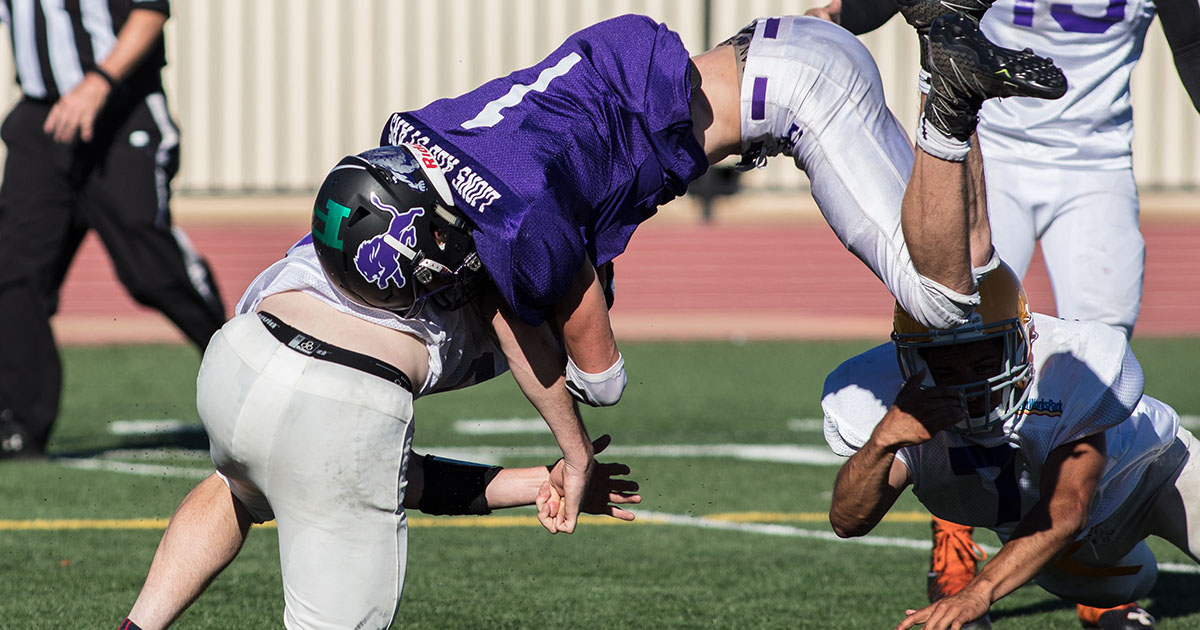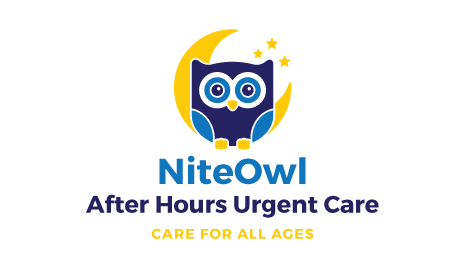NiteOwl Pediatrics Offering $30 Chattanooga Sports Physicals as Hamilton County students go back to school
Now that most local schools are back in session, it’s time to get ready for the kids to put on jerseys and participate in competitive sports.
There’s been a lot of talk as of late about the safety of athletic activities, particularly football. Caution is needed to avoid injury and keep properly hydrated; this can be complicated as the helmets and shoulder pads worn for protection from full contact can also add to the impact of the heat from exertion during late summer practices and games.
In this month’s blog, NiteOwl Pediatrics looks at ways students, parents, coaches, and school officials can minimize the risks of injury.
Concussion Awareness Growing
 Public awareness of the risks of athletics is growing as stories of concussions hit the news. It’s only natural for parents to want to shield their children from risk and carefully weigh the pros and cons of school activities. We don’t expect high impact team sports to vanish anytime soon.
Public awareness of the risks of athletics is growing as stories of concussions hit the news. It’s only natural for parents to want to shield their children from risk and carefully weigh the pros and cons of school activities. We don’t expect high impact team sports to vanish anytime soon.
Local high school football, for example, is a large part of Southern culture. Hamilton County public schools and Chattanooga private schools take great pride in their high school football records – bragging of past championships won, eagerly following the Tennessee high school football rankings, and searching for the score of last night’s football game. Fall just wouldn’t be the same without the fun of our traditional sports rivalries.
It’s important to remember that athletics offer a lot of benefits to the young men and women who participate that extend far beyond stadiums. Things like developing their confidence and leadership skills, enhancing self-respect and learning goal-setting and time management skills. Participation in high school sports makes students less likely to drop out of school, earn higher grades, and go on to earn higher incomes after graduating college.
Our whole culture is increasingly sedentary, with growing obesity rates, as video games replace physical activities. Participation in youth sports encourages better health and fitness, which in turn results in a lower incidence of heart disease, stroke and even cancer. Additionally, a survey suggests that teens who are student-athletes are less likely to use drugs, smoke cigarettes, and carry weapons.
Preventing Injuries by Regulating Tennessee High School Football Practices
Of course, championships don’t come without lots of hard work and repetitive drills, often with full contact.
The Tennessee Secondary School Athletic Association (TSSAA) regulates activities at football practice sessions, which extends to conditioning and weight room activities without a period of rest and recovery between these and subsequent team practice. Schools are advised to consult a certified athletic trainer or other appropriate health care professional to help determine what would be considered adequate rest and recovery based on the rigor of the weight training and conditioning session and the physical condition of the athletes involved.
According to the Centers for Disease Control and Prevention, many sports-related injuries are predictable and preventable. Studies show that a quarter of coaches, athletes, and parents don’t do anything to prevent injuries.
The dangers go beyond the stereotypical broken bone or concussion to injuries caused by overexertion in the heat, dehydration, overuse of muscle groups from repetitive motions without adequate rest and recovery, as well as hypothermia, frostbite, chilblain, and immersion foot from other extreme cold conditions.
The anterior cruciate ligament (ACL) is one of the most commonly injured knee ligaments.
Reducing the Risk of High School Sports Injuries
The first step to getting in the game is visiting a medical provider like our staff at NiteOwl Pediatrics for a Preparticipation Physical Examination, or “a physical”, leading to a required document to present to schools for them to keep on record. Students need an assessment of their physical condition and past medical history to anticipate any potential issues before the student participates. Mental, physical, and hormonal changes can all impact children. Among the things a provider will look at: family medical history, the condition of vision/joints/muscles, the child’s heart, lungs, eyes, ears, nose, and throat. It is also important to consider their height, weight, blood pressure, pulse, and body mass index (BMI).
NiteOwl Pediatrics is currently offering a $30 special on Chattanooga sports physicals to make sure your athlete is ready to get in the game. Please bring any paperwork or forms required for sports participation and activities at your child’s school, as well as any eyeglasses and a complete list of any medications the child takes. Minors must be accompanied by an adult with permission from the child’s parent or guardian.
To sustain a lower incidence of injuries, the American Academy of Pediatrics recommends that students, their parents, and their schools should:
Be aware of the signs and symptoms of injuries.
- Disclose previous injuries to medical providers performing physicals and coaches, as the risk of a new injury is two to three times greater after an initial injury has happened.
- Communicate any concerns with the student’s coach, athletic trainer, or a teacher.
- Limit participation to one team and one sport per season, with activities limited to 5 days per week. For example, the American Academy of Pediatrics recommends allowing at least 1 day off per week to recover physically and mentally.
- Encourage the athlete to maintain a good fitness level before and during the season with sport-specific conditioning in the preseason to prepare for the exertion to come. Coaches and athletic trainers need to keep each athlete’s individual level of conditioning and medical status in mind and adjust activity accordingly. These factors directly affect the exertional heat illness risk.
- Vary sports-specific drills and changeup endurance workouts to avoid too much repetition in training. For example, swimming one day instead of running, etc.
- Advocate for the addition of athletic trainers, which studies show helps to better identify acute or recurring injuries (only 47% of schools have one present during afternoon practices).
- Reduce the pressure on coaches, 53% of whom say they’ve felt pressure from a parent or player to put an athlete back into a game after an injury.
- Limit pressure on student-athletes to perform up to standard in an overly competitive atmosphere, which can lead to burn-out and the child wanting to quit.
- Recognize the symptoms of a concussion (vomiting, headaches, seizures, dizziness, balance problems, slurred speech, and loss of consciousness).
- Encourage plenty of rest and time to heal after a concussion is sustained.
- Follow a safe plan for progressively returning to play after an injury and get the OK from your physician or athletic trainer before resuming play.
- Prevent overuse injuries
- Advocate for your school to have automatic external defibrillators (AEDs) readily available to prepare for sudden cardiac emergencies, which kill thousands of people every year in the US.
- Advocate for schools, clubs, and sports facilities to have someone on staff trained in CPR and administering an AED shock within the first 3 to 5 minutes after a collapse.
- Recognize the signs and symptoms of cardiac arrest in athletes, which can differ in males and females, with no symptoms evident until the moment the cardiac arrest occurs.
We hope this information helps parents understand the risks and benefits of their child participating in school athletics. Let’s win at Tennessee school sports in more than just the numbers on the scoreboard. To arrange your child’s $30 Sports Physical at NiteOwl Pediatrics on Shallowford Road, call ahead (423) 648-6483.
Copyright: teacherdad48 / 123RF Stock Photo
